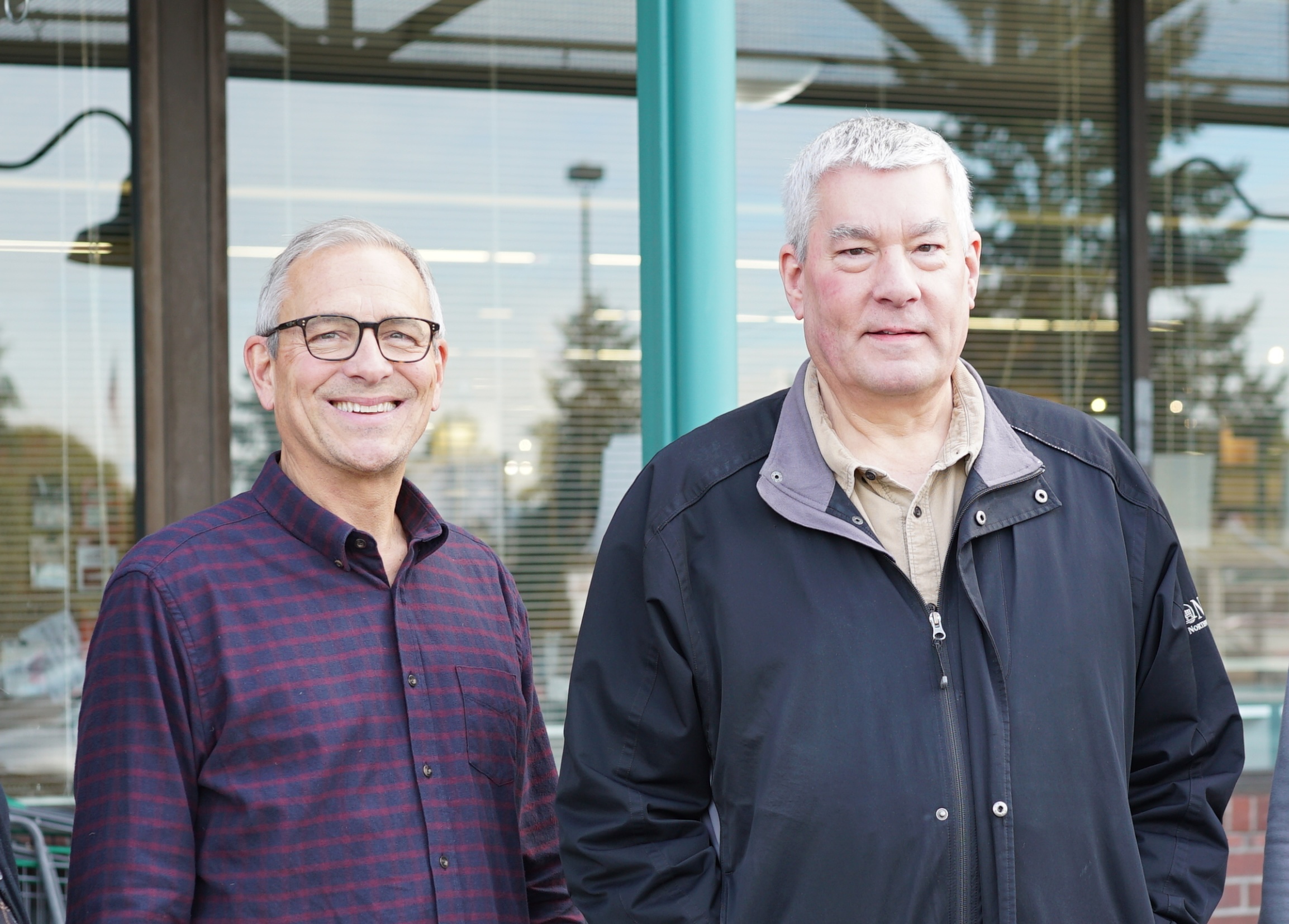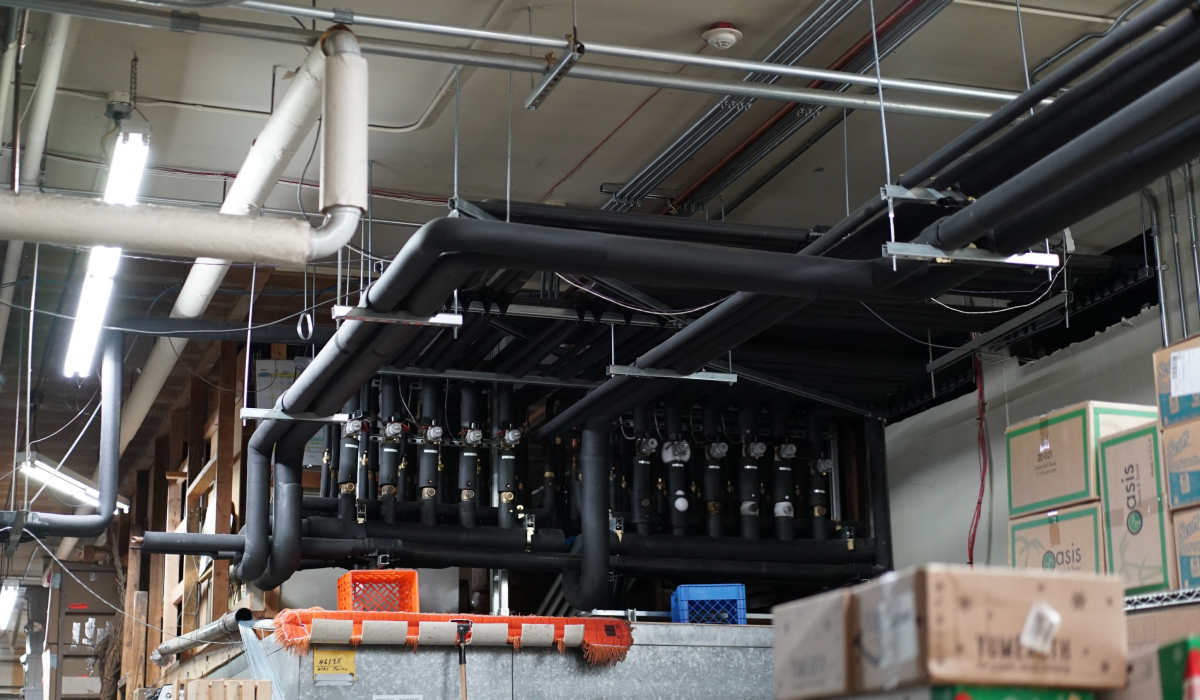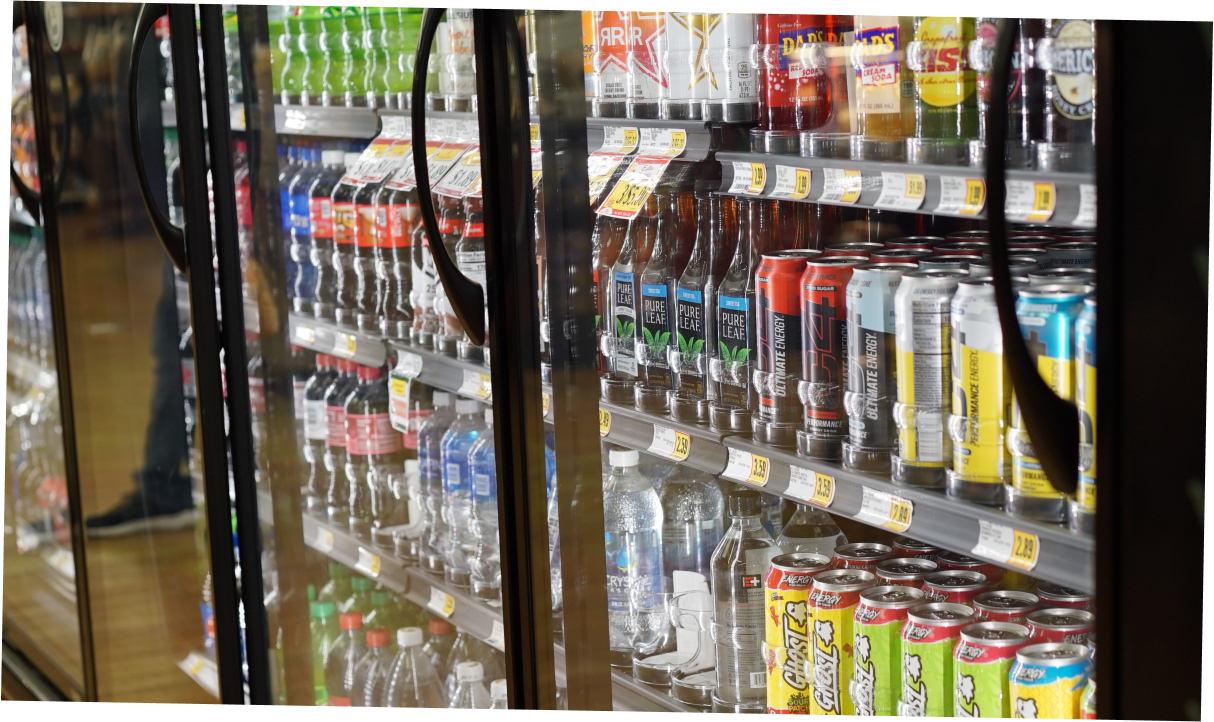Stores reduce refrigeration energy consumption by nearly 27%
If you ever visit Olympia, Washington, and you’re looking for a genuine local community experience, visit either of the two Thriftway grocery stores—Bayview Thriftway on the Puget Sound or Ralph’s Thriftway downtown. As you walk down the aisles, you’ll quickly notice how the staff know their customers by name and take pride in making them happy. The stores are strongly committed to supporting the local economy, featuring products from dozens of hyper-local and regional food partners. If you’re hungry, make sure to check out the Bayview store’s expansive delicatessen and eat in the upstairs dining area with epic views of Budd Bay.
For Stormans, the family-owned local company that owns and operates the Thriftway stores, serving the community with a friendly shopping experience is a top priority. One of the many steps that Stormans has taken to enhance the experience is its recent upgrade of the stores’ refrigeration systems. Many refrigerated cases did not have doors, leading to frequent customer complaints that the stores were too cold. The lack of doors also made it difficult to maintain consistent temperatures in the cases. These factors—along with the fact that the existing refrigeration equipment was 20 years old and needed frequent repairs—led the company to partner with Taper in 2022 to deploy new refrigeration equipment in both Thriftway stores.
Up-front planning to minimize disruption
Stormans wanted a comprehensive refrigeration remodel. This would involve taking numerous existing standalone refrigeration systems offline and replacing them with much larger centralized systems—a complex undertaking. Our goal from the start was to make this year-long project super-simple for Thriftway employees and minimize the disruption of store operations. We would take care of everything so that business as usual could continue. Permitting? Check. Equipment ordering? Check. Equipment rebates from the local utility, Puget Sound Energy? Check. Managing the construction schedule and all subcontractors—structural, electrical, doors, and more? Check.

In our kick-off meeting, we showed the store owners and managers our proposed schedule along with store floor plans so that they could see the timing and location of all activities. This up-front planning enabled them to arrange for store employees to unload products from the old refrigerated cases and reload them into new cases upon installation. The idea was to minimize impacts on sales.
We heard the needs and concerns of the Thriftway team and refined the plan together. One big pain point that came up in the kick-off was unloading and reloading products—a labor-intensive process often made more challenging by the limited cold storage space during the transition. We proposed placing refrigerated semi-trailers at each site and using them to store products during the case replacement process, ensuring no food was lost to spoilage.
From standalone to centralized
To make the remodel seamless for store operations, we installed the centralized systems in the back of the stores first so that new refrigerated cases could be quickly connected and brought into service on the sales floor.
Both Bayview and Ralph’s stores had multiple standalone refrigeration units on the roof that were old and inefficient. At Bayview, the original system was replaced with a much more efficient centralized rack refrigeration system and a new condenser. The new rack system was housed in an existing machine room. At Ralph’s, there wasn’t a refrigeration machine room, so we deployed two Hussmann Protocol units that fit nicely in an existing storage area.

The new systems operate more efficiently and use less energy than the previous standalone units, which translates into lower electricity costs. By moving numerous standalone systems off the roof and replacing them with neatly packaged centralized systems, both stores were also able to significantly reduce maintenance costs due to ease of access and better, more efficient system design.
The new centralized systems are more integrated and less vulnerable to outages. In the past, if a compressor on the roof shut down, the refrigerated cases served by the compressor went completely offline, and store employees would need to quickly relocate product to prevent spoilage. Now, if one compressor on the rack shuts down, the centralized system’s other compressors continue operating, maintaining temperatures in the cases.
More comprehensive control
At both Bayview and Ralph’s Thriftway, we deployed centralized control platforms that enable the stores’ maintenance teams to monitor and control many more operational parameters than previously possible. These include temperatures throughout the system, defrost cycles, and leak detection. The control platform automatically adjusts the system’s suction pressure based on temperatures in the refrigerated cases and walk-in freezers, increasing overall system efficiency. Store staff can use the platform to track operations remotely, receive alerts when problems arise, and quickly adjust system parameters.
We also installed smart controls on the stores’ existing anti-sweat heaters (ASHs) on frozen food display cases. ASHs are used to combat the condensation that can form on glass doors and make it difficult for customers to see products. ASHs are typically uncontrolled and run all the time, even when there is no condensation. The new controls turn on the ASHs when condensation is sensed and turn them off when not needed. This reduces energy usage and increases the lifespan of ASHs.
New cases, doors, and motors
Once the centralized refrigeration systems and controls were in place, we were ready for the change-out of cases on the sales floor. At the Bayview store, we replaced 124 linear feet of doorless reach-in refrigerated cases with new cases with doors. The new cases maintain temperatures more efficiently, improve store aesthetics, and are better lit for more attractive merchandising. They also have lower maintenance costs.
Across the two stores, Taper retrofitted 202 linear feet of existing reach-in refrigerated cases by adding new doors, further improving efficiency and merchandising. Increasing the number of cases with doors has made the stores more comfortable for customers and employees and has improved food safety. We also replaced more than 100 condenser fan motors in reach-in cases and walk-in refrigerators and freezers with more efficient electronically commutated motors, also known as ECMs.
A Project to Be Proud Of
The Thriftway project was extremely successful, accomplishing Stormans’ goals without significant disruptions to store operations. We brought substantial incentive dollars into the equation to ensure that Stormans could maximize its investment and accomplish its objectives. Other keys to success were extensive planning as well as transparent, frequent, and timely communications among all stakeholders—Taper, Stormans, equipment manufacturers, subcontractors, Puget Sound Energy, and the Olympia Building Department.
“Everything about the remodel was so easy,” said Kevin Stormans, Thriftway Stores co-owner. “The meetings were very collaborative, and there was good communication. We talked through all the details of the plan. Then Taper made the magic happen and stuck to the plan. There were no last-minute surprises.”
Stormans is enjoying the project’s many benefits today. Thanks to the substantial efficiency improvements, the remodel has reduced the stores’ electricity bills by 27%. The company is using the savings to help finance the project. With fewer service calls and repairs needed, maintenance costs are way down.

The new systems are much better for the environment. Both stores transitioned to R448a, a refrigerant with nearly 70% lower global warming potential than the R404 refrigerant being replaced. The new refrigerant keeps the stores in compliance with the US Environmental Protection Agency’s hydrofluorocarbon phasedown schedule for at least the next 10 years. With all the new, shiny refrigerated cases and case doors, the stores look beautiful.
“We recently walked through the stores with the Taper team for our one-year post-project assessment,” said Stormans. “I was amazed at how brand-new everything looked. I’m grateful to Taper for allowing us to give our community a better shopping experience. I feel proud about the success of this project.”
